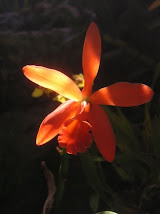 An extraordinary feature when arriving in Tongatapu -main island of Tonga- is the elegant traditional clothing of the locals.
An extraordinary feature when arriving in Tongatapu -main island of Tonga- is the elegant traditional clothing of the locals.Tongan men wear a tupenu, a cloth that is similar to a sulu in Fiji, which is wrapped around the waist. In daily life, Tongans wear a shirt to top the tupenu (with eventually a tie for official occasion). Often, a ta’ovala, a woven mat, is worn over the tupenu. It is wrapped around the waist and secured with a kafa rope. The normal taʻovala, for everyday neat wear, is a short mat, coming halfway up the thighs. The mat worn on festive occasions is much larger, and often very nicely decorated. Likewise the taʻovala for a funeral is also a huge mat,
 but much coarser, not decorated, and if the wearer has an inferior rank towards the deceased, the mat is old and torn. The older and more torn it is, the better. Yet all these special mats are kept as precious heirlooms. Taʻovala are traditionally made of strips of pandanus leaves or strips of hibiscus bast fiber.
but much coarser, not decorated, and if the wearer has an inferior rank towards the deceased, the mat is old and torn. The older and more torn it is, the better. Yet all these special mats are kept as precious heirlooms. Taʻovala are traditionally made of strips of pandanus leaves or strips of hibiscus bast fiber.Women wear a tupenu too, but a long one which should reach to the ankles. The tupenu is usually topped with a kofu or dress. They also wear a taʻovala, or more often a kiekie, a string skirt attached to a waistband. It is lighter and cooler than a mat.
School children unifrom woumls also include the upenu and a ta’ovala.
According to a Tongan story, a group of Tongans once arrived by boat at the Tu’I Tonga
 (line of Tongan kings), but they had had a rough ride and their clothing, if any remained, was not respectable. They cut the sail of their boat (Polynesian sails are also mats) in pieces and wrapped them around. The king was so pleased by the sacrifice they had made to him of their expensive sail, that he ordered this dress to be court dress from then on. The Tongan waist-mat probably shares a common origin or inspiration as the Samoan valatau or vala waistband often donned by orators and chiefly sons and daughters on festive occasions and rituals. The ta'ovala is also commonly seen among the Fijian Lau islands, a region once heavily influenced by Tongan hegemony and culture.
(line of Tongan kings), but they had had a rough ride and their clothing, if any remained, was not respectable. They cut the sail of their boat (Polynesian sails are also mats) in pieces and wrapped them around. The king was so pleased by the sacrifice they had made to him of their expensive sail, that he ordered this dress to be court dress from then on. The Tongan waist-mat probably shares a common origin or inspiration as the Samoan valatau or vala waistband often donned by orators and chiefly sons and daughters on festive occasions and rituals. The ta'ovala is also commonly seen among the Fijian Lau islands, a region once heavily influenced by Tongan hegemony and culture.






























No comments:
Post a Comment